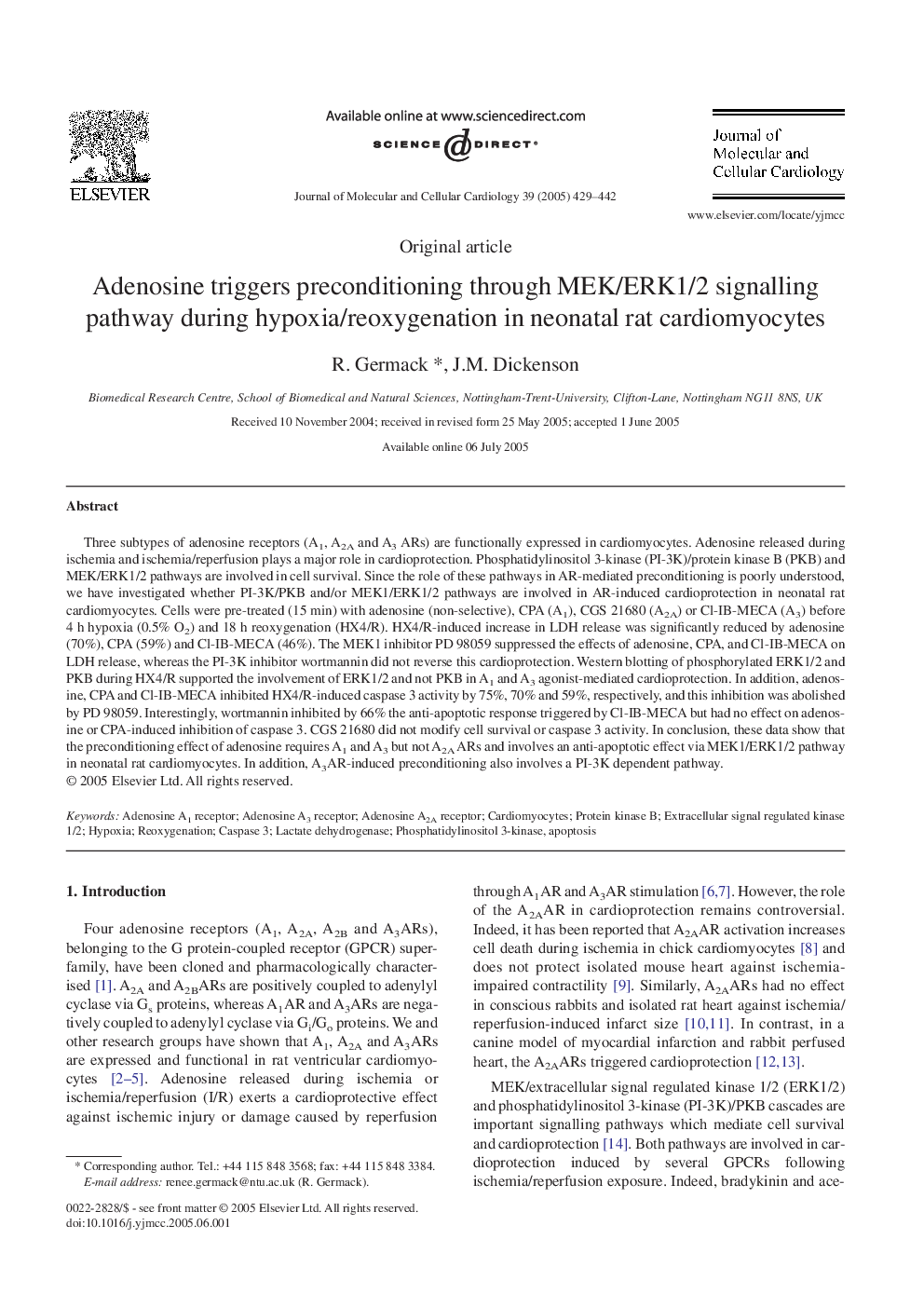| Article ID | Journal | Published Year | Pages | File Type |
|---|---|---|---|---|
| 10954463 | Journal of Molecular and Cellular Cardiology | 2005 | 14 Pages |
Abstract
Three subtypes of adenosine receptors (A1, A2A and A3 ARs) are functionally expressed in cardiomyocytes. Adenosine released during ischemia and ischemia/reperfusion plays a major role in cardioprotection. Phosphatidylinositol 3-kinase (PI-3K)/protein kinase B (PKB) and MEK/ERK1/2 pathways are involved in cell survival. Since the role of these pathways in AR-mediated preconditioning is poorly understood, we have investigated whether PI-3K/PKB and/or MEK1/ERK1/2 pathways are involved in AR-induced cardioprotection in neonatal rat cardiomyocytes. Cells were pre-treated (15Â min) with adenosine (non-selective), CPA (A1), CGS 21680 (A2A) or Cl-IB-MECA (A3) before 4Â h hypoxia (0.5% O2) and 18Â h reoxygenation (HX4/R). HX4/R-induced increase in LDH release was significantly reduced by adenosine (70%), CPA (59%) and Cl-IB-MECA (46%). The MEK1 inhibitor PD 98059 suppressed the effects of adenosine, CPA, and Cl-IB-MECA on LDH release, whereas the PI-3K inhibitor wortmannin did not reverse this cardioprotection. Western blotting of phosphorylated ERK1/2 and PKB during HX4/R supported the involvement of ERK1/2 and not PKB in A1 and A3 agonist-mediated cardioprotection. In addition, adenosine, CPA and Cl-IB-MECA inhibited HX4/R-induced caspase 3 activity by 75%, 70% and 59%, respectively, and this inhibition was abolished by PD 98059. Interestingly, wortmannin inhibited by 66% the anti-apoptotic response triggered by Cl-IB-MECA but had no effect on adenosine or CPA-induced inhibition of caspase 3. CGS 21680 did not modify cell survival or caspase 3 activity. In conclusion, these data show that the preconditioning effect of adenosine requires A1 and A3 but not A2A ARs and involves an anti-apoptotic effect via MEK1/ERK1/2 pathway in neonatal rat cardiomyocytes. In addition, A3AR-induced preconditioning also involves a PI-3K dependent pathway.
Keywords
Related Topics
Life Sciences
Biochemistry, Genetics and Molecular Biology
Cell Biology
Authors
R. Germack, J.M. Dickenson,
